Southern Senegal’s Casamance Region felt like a place of transitions to me. For one, this is where the drier Sahel Zone to the north gives way to the more tropical landscapes of the southern parts of West Africa for the first time.
Apart from that, there’s a mixture of cultural traditions, languages and religions that I found incredibly intriguing. Islamic traditions mix with Christianity and animist beliefs, and the region is full of little kingdoms, most of which aren’t bigger than a village.
Together with the sleepy tropical vibe of the regional capital Ziguinchor, all of this combined to make the Casamance one of my favourite places in West Africa. Here’s my itinerary to see some of the region’s most interesting places in just a few days.
This post may contain affiliate links, and I might earn a small commission at no additional cost to you. For more info, click here.
4-Day Basse Casamance Itinerary
While I could easily have spent a week or more lounging in riverside villages and hopping between islands in the region, I only had four full days in the Lower Casamance.
If you’re on a similar schedule, here’s my suggested itinerary that includes the chilled-out capital Ziguinchor, the small Diola villages of Mlomp and Elinkine, the pretty island of Carabane and the relaxed beach town of Kafountine.
That said, this itinerary is only about the Lower Casamance Region, which is centred around Ziguinchor and the Casamance River delta. If you’re interested in traveling to the little-visited eastern part of the area, check out my guide to the Haute Casamance.
Day 1: Ziguinchor
Ziguinchor is the regional capital and a good first stop while exploring the area. There are plenty of restaurants and hotels, and it’s a good transportation hub for the rest of the Casamance. Whether you actually like the atmosphere of the city itself depends on your personal preference, though.
I really liked the somnolent vibe of a crumbling tropical port long past its prime and if you’re into faded colonial architecture, just walking around the older part of town near the river is a treat.
Some of the more atmospheric buildings are the governor‘s residence near the western end of Rue Génerál de Gaulle and the old courthouse (Palais de Justice) one block to the south-east.
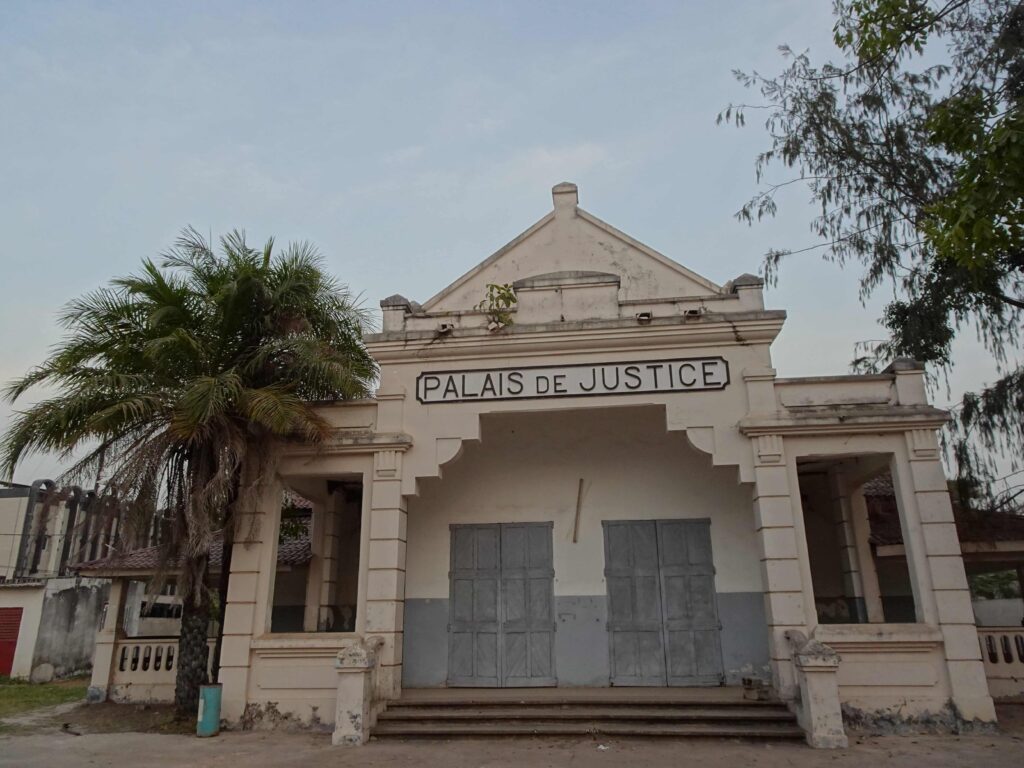
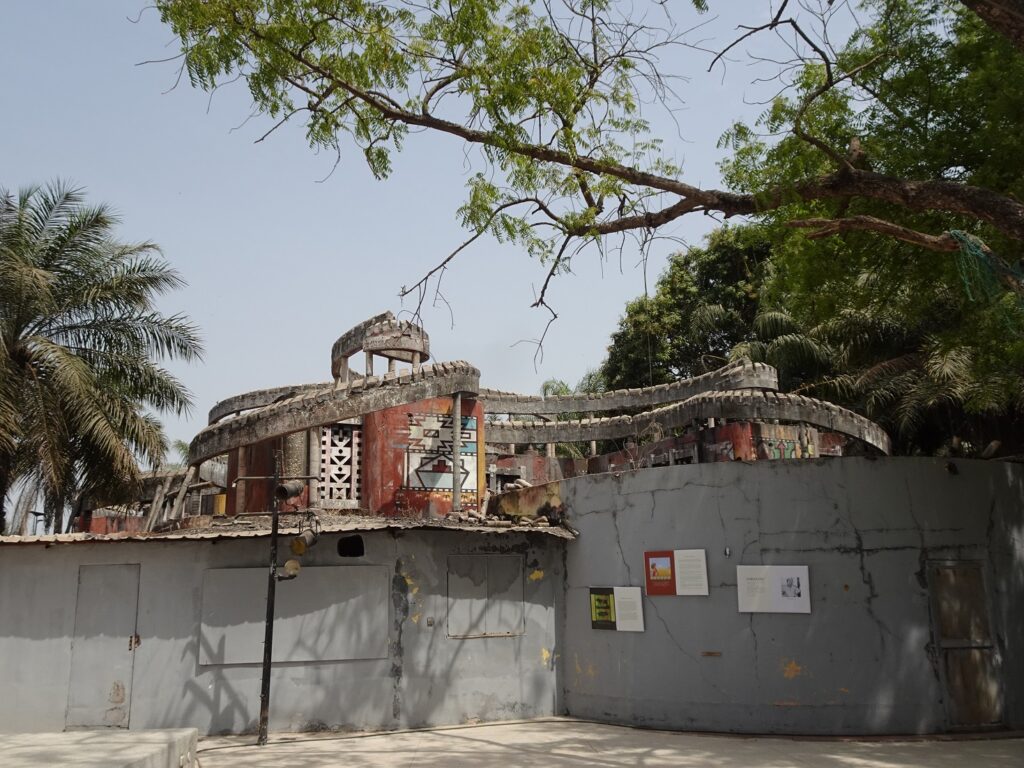
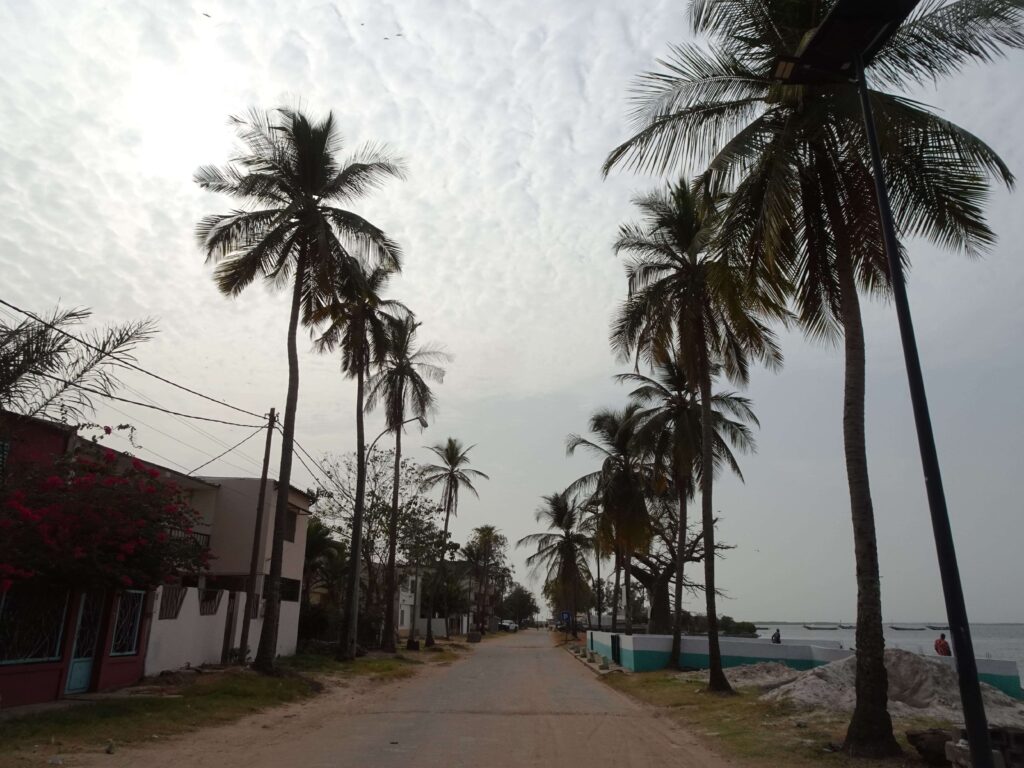
Apart from that, I checked out Marché Saint-Maur-des-Fossés, Ziguinchor’s main market. Like most markets I came across in Senegal (or Africa in general), it’s obviously noisy and chaotic, but also a fascinating place to watch people go about their daily business.
Nearby is the Alliance Française, which hosts small art exhibits and has a nice little garden café. Another pretty place for a beer or bissap (Hibiscus) juice is the riverside terrace of the Hotel Le Perroquet. From here, you can also follow Rue du Commerce west to the port, where you can watch the colourful fishing boats being unloaded in the late afternoon.
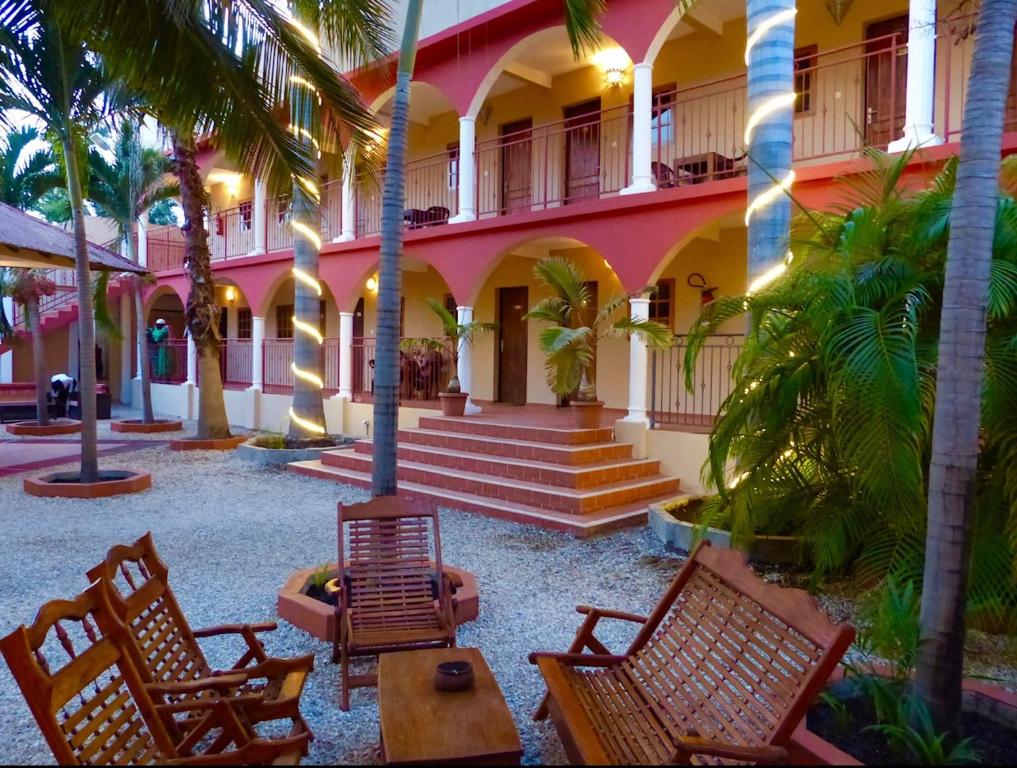
Ziguinchor Hotel Tips
Budget: Casa Motel
Midrange: Kër Adja
Luxury: Les Jardins du Flamboyant (pictured)
.
Day 2: Mlomp and Elinkine
For my second day, I headed west through an area of tiny traditional Diola villages and massive kapok trees. I stopped in Mlomp and Elinkine on my way to the Île de Carabane. Another popular place in the area is Oussouye, which I only passed through on this trip, so I can’t give you any first-hand information.
Mlomp
My first stop was Mlomp, a tiny village which is mainly known for its two unique types of local architecture.
One of them is the Case à étage – an interesting two-storey adobe building with a wooden balcony that was apparently built in the 1940s. You can visit it for a 1,000 CFA, and if you speak some French you can also have a chat with the grandson of the man who built the place.
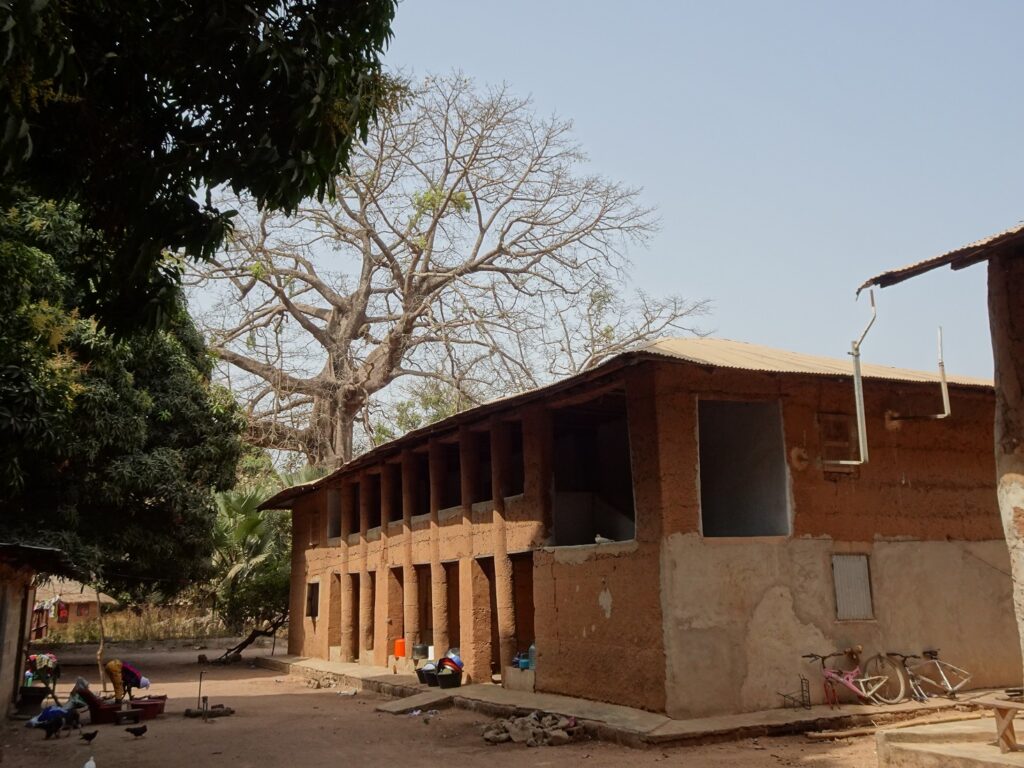
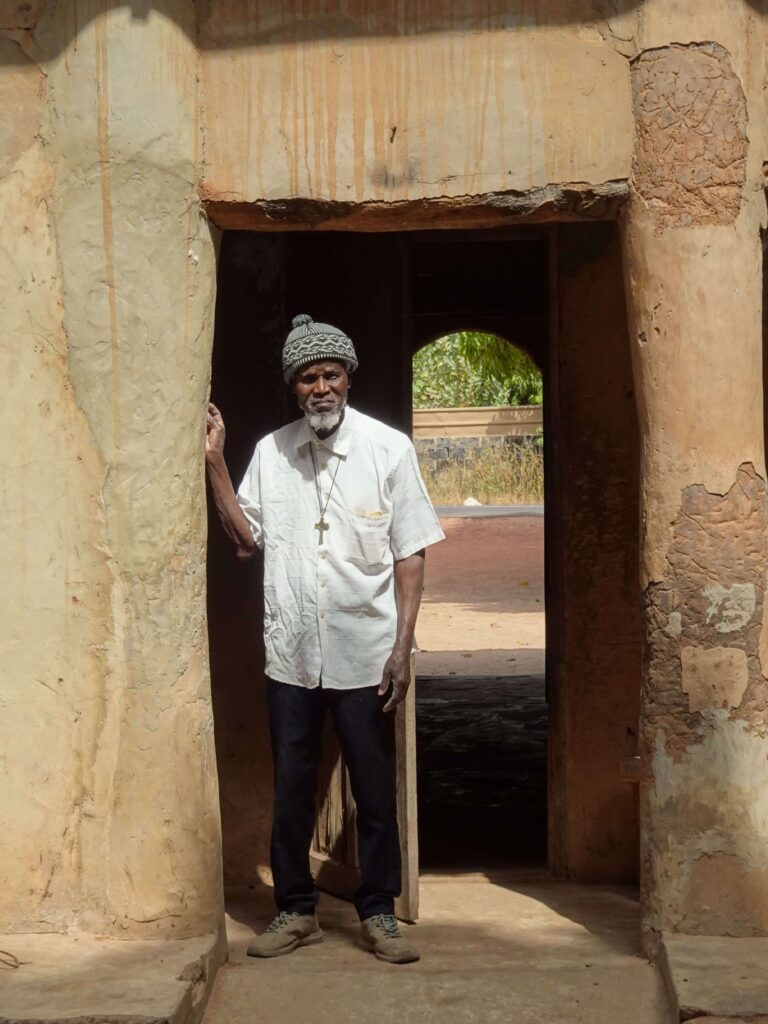
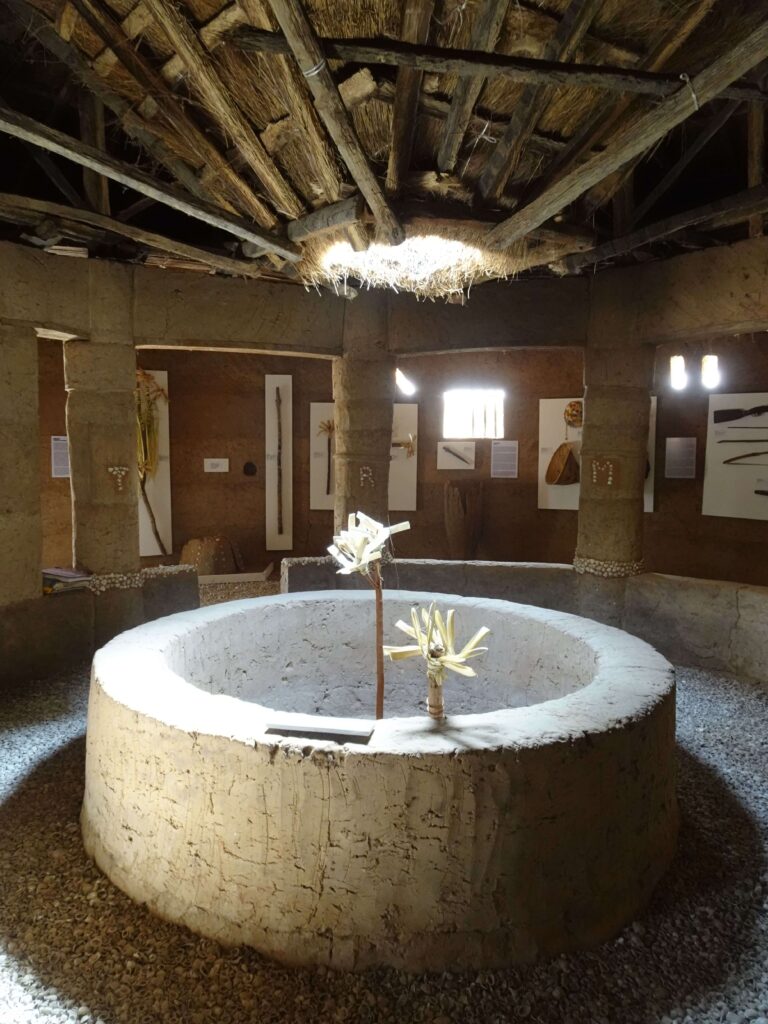
The other type of building – the Case à impluvium – is a bit more common in the area, but still quite fascinating to visit. These round mudhouses are built around a central rainwater cistern, and the one in Mlomp contains a little local museum about the area’s history and animist traditions. Again, there’s an entrance fee of 1,000 CFA.
To get to Mlomp, you can take a Sept-Place from Ziguinchor’s gare routière, which is at the eastern end of the bridge. I paid 500 CFA for the trip.
Elinkine
From Mlomp, it’s just a short Sept-Place ride to Elinkine, a small fishing village on the Casamance River delta. This is the springboard for trips to the Île de Carabane and while there’s not a lot to see, I enjoyed strolling up the beach past the fishing boats while I was waiting for the boat to arrive.
If you want to go to Carabane Island as well, there are irregular public ferries during the day that go once they’re full (500 CFA per Person). If you don’t want to wait, there are plenty of people willing to take you on a more expensive private trip.
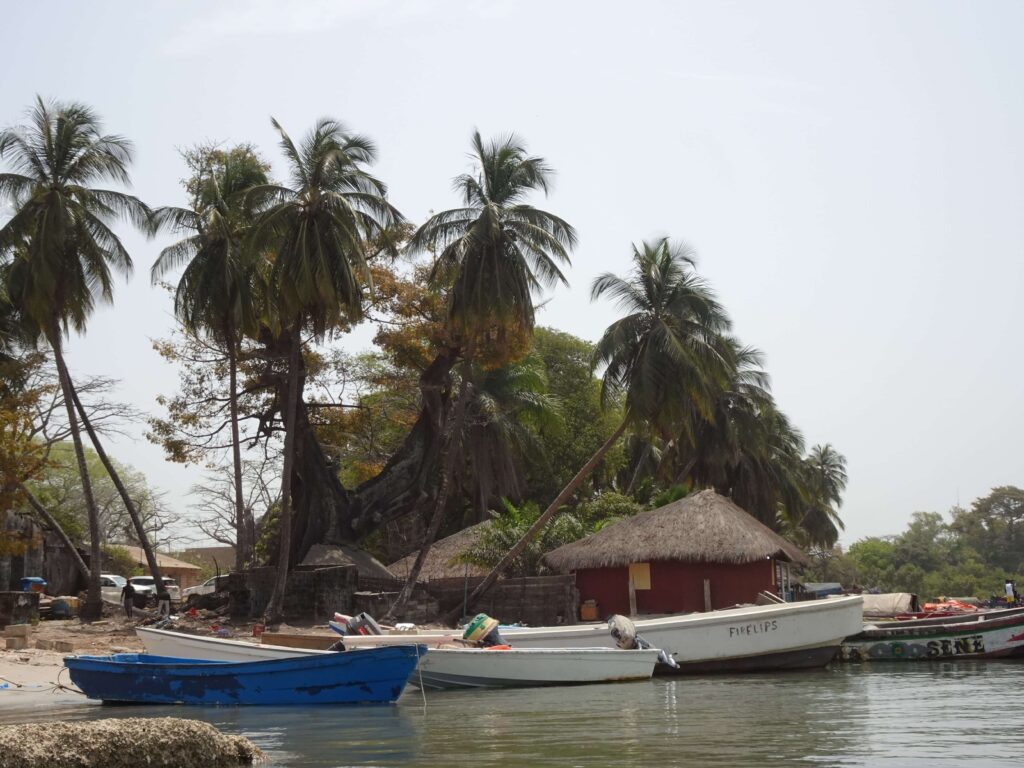
Don’t let anyone pressure you into taking one of those private boats, unless you want to. When I arrived, a guy told be that there were no more public ferries today. I treated that as the BS I assumed it to be and sure enough, only 5 minutes later, I was on the public boat.
That said, if you prefer a little comfort and peace of mind, a private boat might not be the worst option. The public one I was on was super full, kept filling up with water that had to be constantly emptied out, and felt like it was about to tip over several times 😅.
Day 3: Île de Carabane
Carabane Island is a good contender for my favourite place in the region. It’s a sandy little island at the mouth of the Casamance River that once served as a French colonial trading post. To be honest, I found it hard to imagine that the sleepy island was ever the centre of any activity – trading or otherwise.
There are a few colonial-era buildings to explore, like an old church, a French cemetery, and the ruins of a crumbling school building, which is slowly being overtaken by the trees and vines. That said, what I liked about the place was the time-forgotten atmosphere of the island rather than its modest sights.
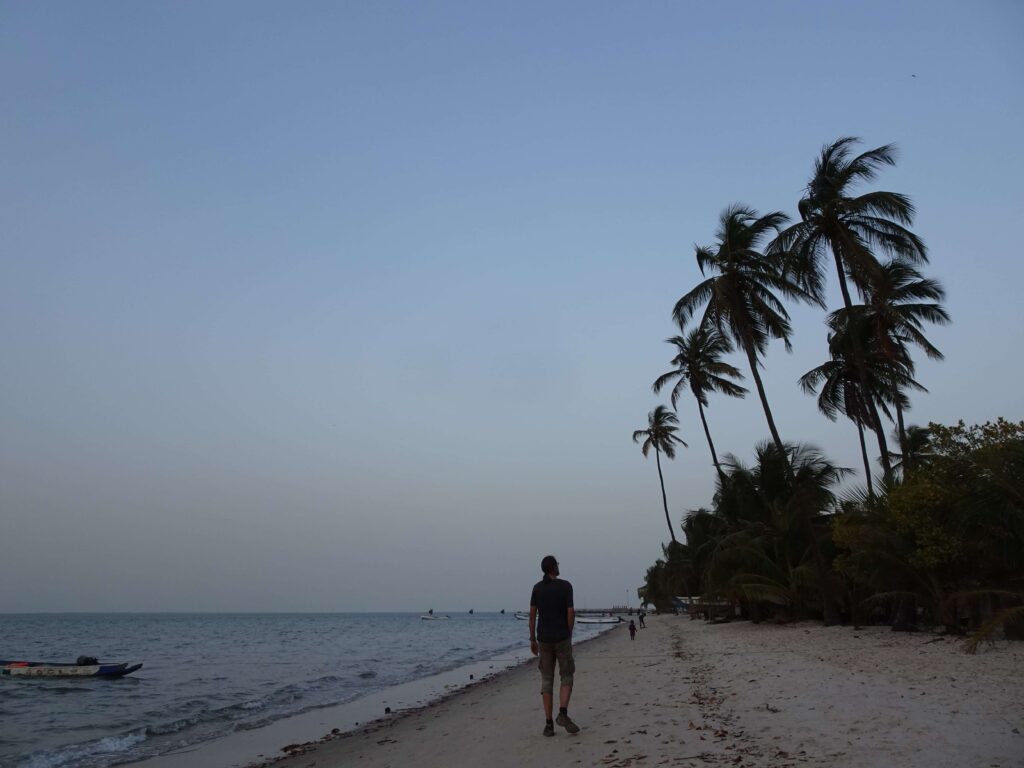
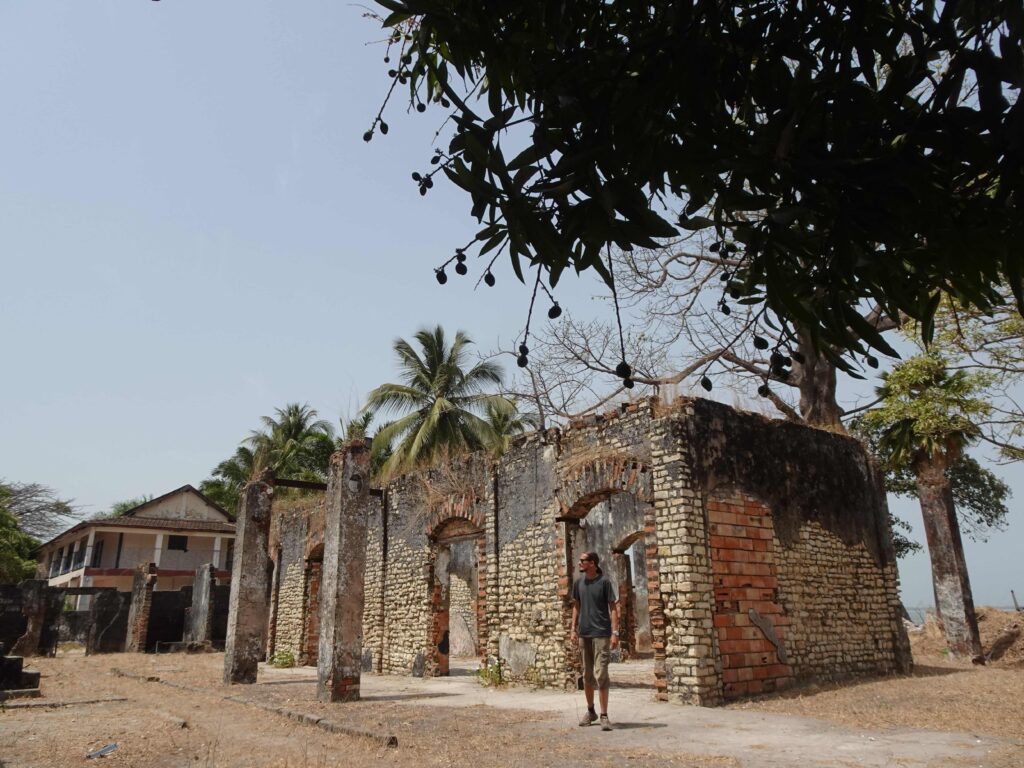
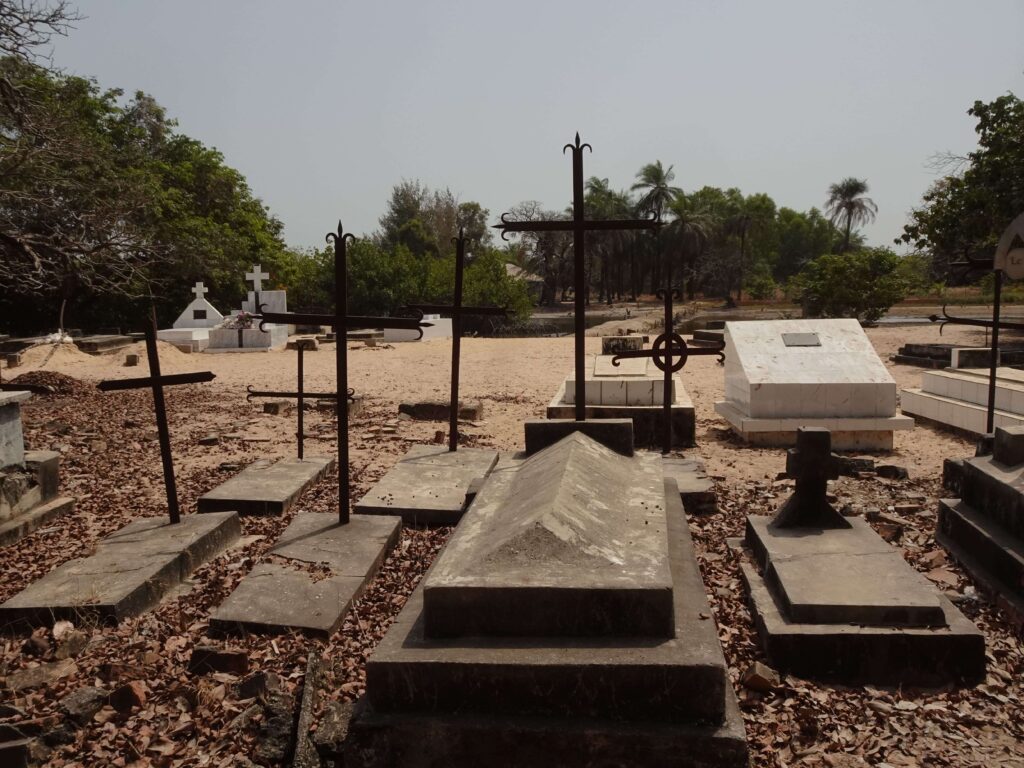
As there isn’t a lot to see here, lazing by the beach might be a good way to spend the day on the Île de Carabane, but it’s also a nice place to walk around without a real destination. There are no cars and I found it fun to follow the few sandy footpaths running between palm groves and farm houses to see where they end up.
I made it from the tiny village at the port past the mangrove swamps and fields almost all the way to the southern end of the island, although it required crossing some small inlets and making my way through dense patches of tall grass.
Hotel Tip: I stayed at the simple, affordable Campement Le Barracuda in the main village.
Day 4: Kafountine
From the Île de Carabane, you’ll have to make your way back via Elinkine to Ziguinchor, from where you can take a Sept-Place to small Kafountine on the Atlantic coast. The entire trip should take about half a day, which leaves you with an afternoon to walk along the beaches and the sandy back roads of the town.
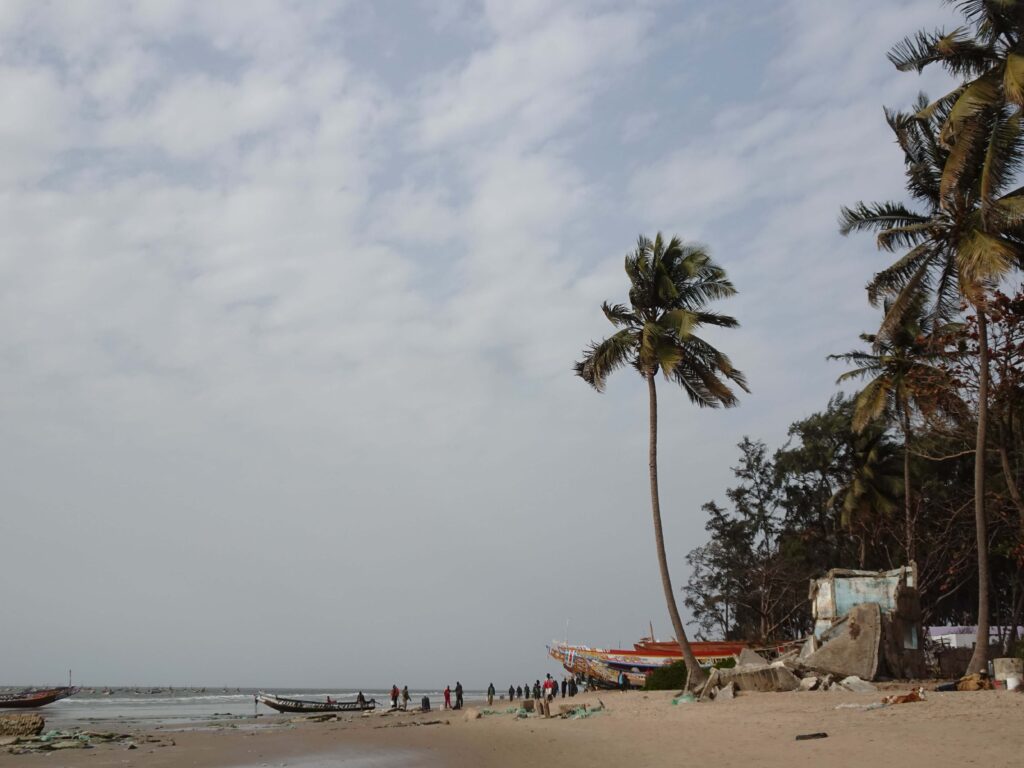
Kafountine is said to be full of Rastafarians (well, actually Baye Fall, a Mouride Sufi sect), but to be honest, I didn’t encounter more dreadlocks here than in Ziguinchor or Kartong across the border in The Gambia. That said, it’s another sleepy place with the same laid-back vibe I encountered in most of the Casamance Region.
As per usual, the only places with some more activity are the harbour area and the fish market, especially in the late afternoon, when the boats come in with their catch. Apart from that, having a swim or a drink by the beach are the main activities in Kafountine.
From the gare routière at the eastern end of town, you can catch sept-places and minibuses to the Gambian border crossing at Seleti and onwards to Brikama, where you can find a ride to any place in The Gambia.
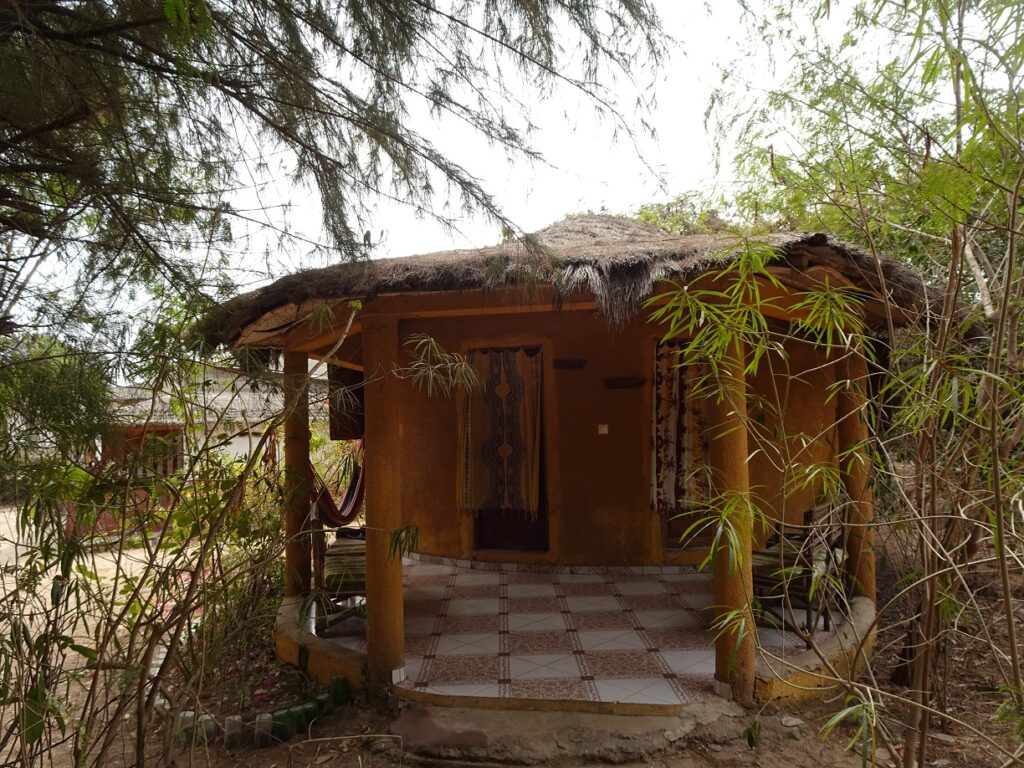
Kafountine Hotel Tips
Budget: Karamba Lodge
Midrange: NaturUbuntu (pictured)
Luxury: Esperanto Lodge
.
Other Destinations in the Area
If you have the time, you can easily spend a week or more in this beautiful area. I only had four days here, but I’m definitely planning on coming back. Other places in the Basse Casasmance that got recommended to me, but that I didn’t make it to on this trip are Cape Skirring, Oussouye, Abéné and Niomoune.
Basse Casamance Itinerary Map
All the places I mentioned in my guide can be found in this map of the Lower Casamance Area. I’ve used different colours for the different days of the itinerary.
Transport in the Basse Casamance
The main mode of public transport in this part of the Senegal are the sept-places (shared station wagons for 7 passengers). I found them rather comfortable compared to bush taxis or minibuses in other parts of Africa.
Interestingly enough, there are even assigned seats (Number 1 being the passenger seat in the front, which is by far the best, Number 5 to 7 the rather uncomfortable and stuffy seats in the back). There are also shared minibuses, but they are slower and generally less comfortable (albeit a little cheaper).
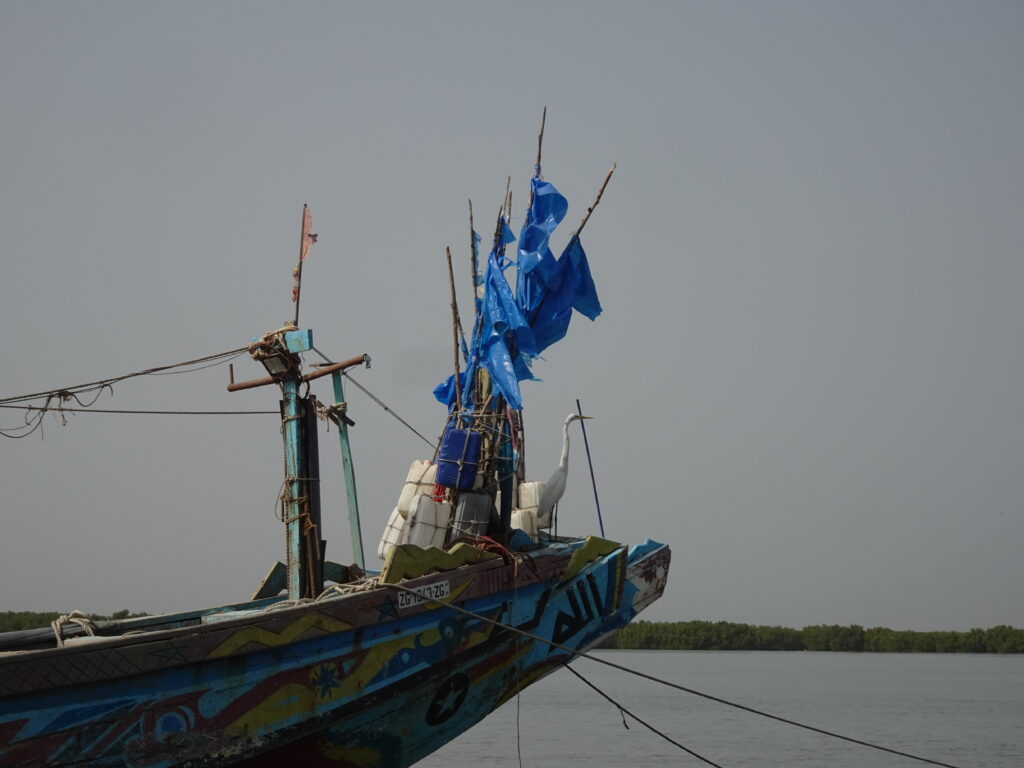
Both minibuses and sept-places run from the bus stations in every city and bigger town. Just ask for gare routière and anyone can point you in the right direction. Otherwise, you can always try and wave them down along the road between towns.
The main transport hub in this part of the country is the large gare routière in Ziguinchor, from where you can get transport to all other parts of the Casamance, as well as many places in Senegal and across the border in The Gambia, Guinea and Guinea-Bissau.
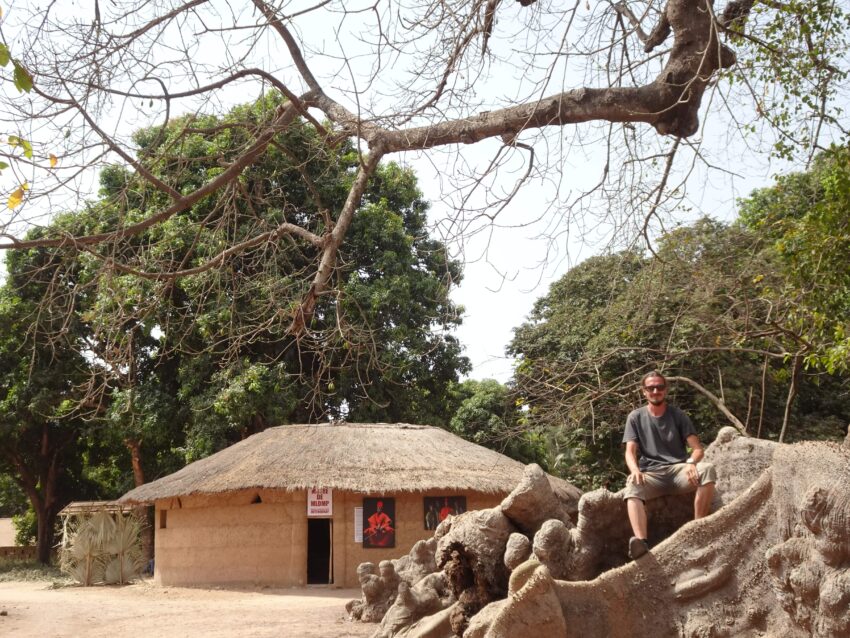

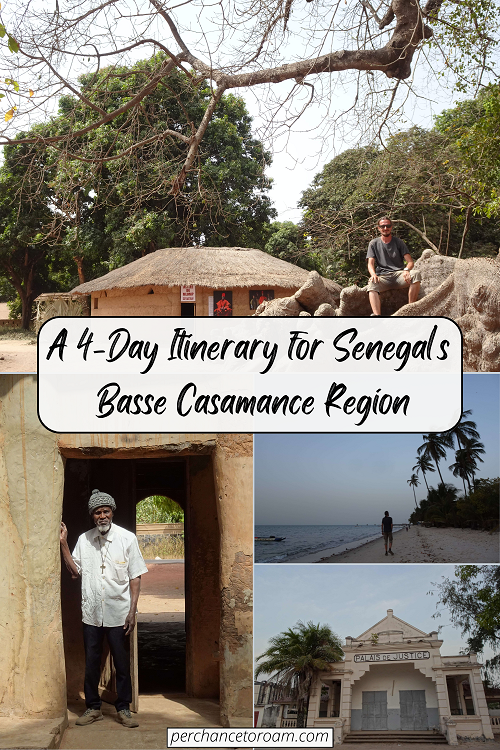
Hallo Reinhard
Ich bin heute per Zufall auf deinen Blog gestossen und wollte dir nur kurz eine kleines Lob aussprechen.
Endlich Mal ein Blog ohne die Selbstinszenierung, sondern mit viel schlauen und praktischen Infos.
Finde ich toll!
Liebe Grüsse aus der Schweiz
Oliver
Hallo Oliver,
vielen Dank für dein Feedback! Ich stelle mir tatsächlich vor jedem Post, den ich schreibe, die Frage, was ich selbst gern in einem Blog zum jeweiligen Ziel lesen würde, bzw. welche Informationen mir oft fehlen. Insofern freut es mich natürlich sehr, wenn meine Guides tatsächlich als hilfreich und informativ empfunden werden:-)
Liebe Grüße
Reinhard